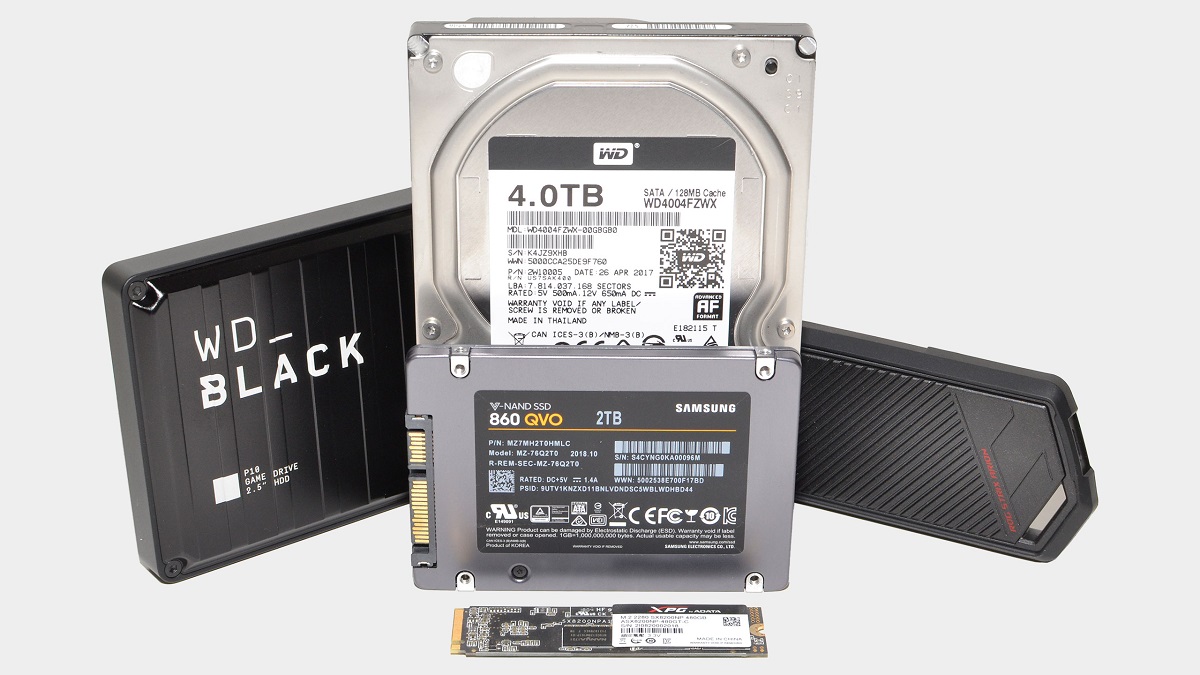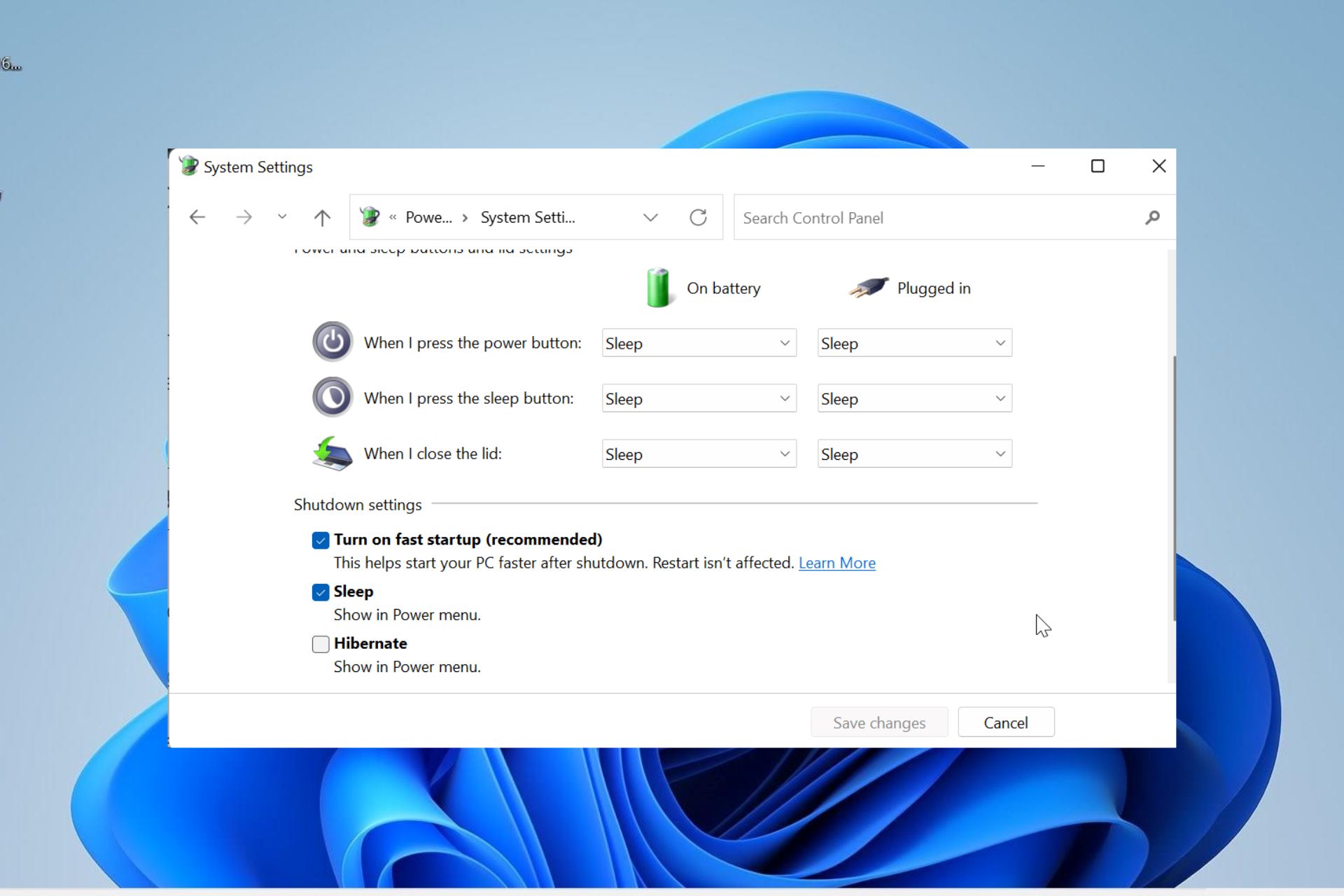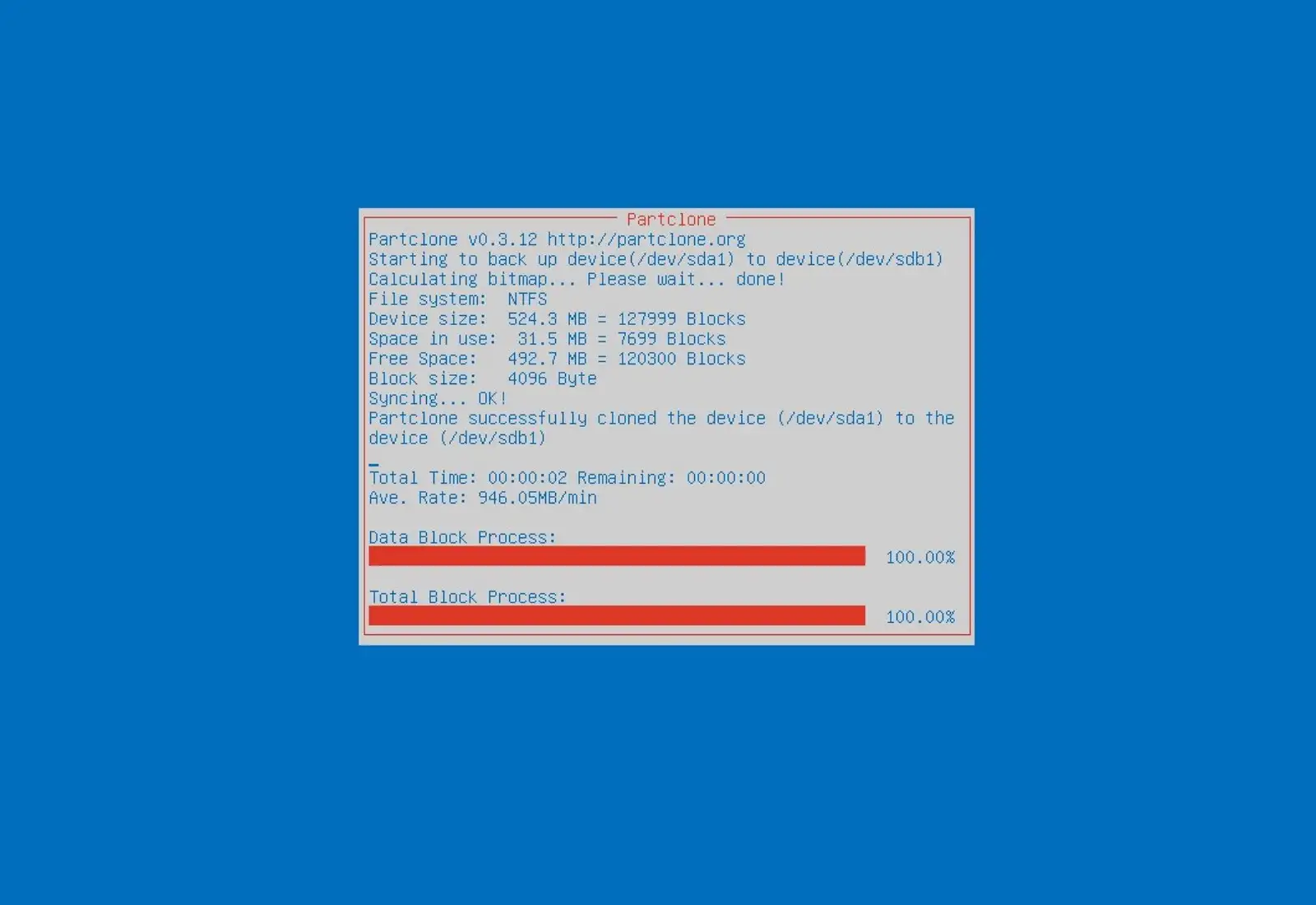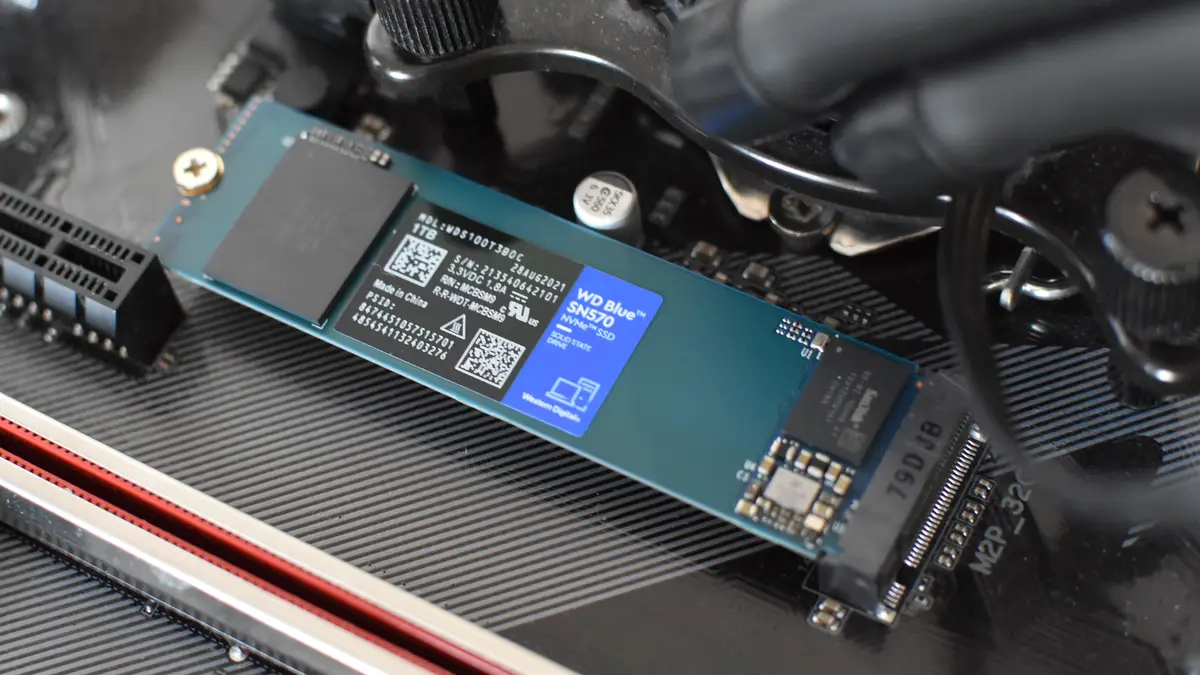Introduction
Welcome to the world of Windows 11! With its sleek design and modern features, Windows 11 is capturing the attention of tech enthusiasts around the globe. One of the key features that ensures the security of your operating system is Secure Boot. In this article, we will explore what Secure Boot is and why it is important for your Windows 11 device.
Secure Boot is a security feature implemented in the BIOS/UEFI firmware of your computer. It plays a crucial role in protecting your system from malicious software and unauthorized access during the boot process. By verifying the integrity of the system files and drivers before allowing them to load, Secure Boot acts as a gatekeeper, ensuring that only trusted and digitally signed components can run on your device.
Now you might wonder, why is Secure Boot so important? In the digital age where cyber threats are constantly evolving, having a strong defense mechanism for your operating system is imperative. Secure Boot helps prevent the loading of unauthorized bootloaders, rootkits, and other malicious software that can compromise the security and stability of your system. By enforcing the use of signed and trusted components, Secure Boot significantly reduces the risk of these types of attacks.
Additionally, Secure Boot provides protection against so-called “bootkits” that may attempt to modify the bootloader or other critical system files. This ensures the integrity of the boot process and prevents potential threats from gaining control over your system from the moment it starts up.
Before we proceed, it’s important to check if your system supports Secure Boot. Not all computers come with this feature enabled by default, and some older hardware may not support it at all. By verifying its compatibility, you can ensure the successful implementation of Secure Boot on your Windows 11 device. Let’s find out if your system is up to the task in the next section.
What is Secure Boot?
Secure Boot is a security feature that has been implemented in modern computer systems to protect against unauthorized and malicious software during the boot process. It is integrated into the firmware of your computer, specifically in the BIOS (Basic Input/Output System) or UEFI (Unified Extensible Firmware Interface) settings. The primary goal of Secure Boot is to ensure that only trusted and digitally signed components are allowed to load and run on your system.
When your computer boots up, the firmware performs a series of checks to verify the integrity and authenticity of the firmware itself, the bootloader, and other critical system files. This is done through cryptographic signatures that are embedded in the components. These signatures are created by the software developers or manufacturers and are used to validate the integrity of the components.
Secure Boot works by using a public key infrastructure (PKI) to verify the signatures of the components during the boot process. The firmware has a built-in root certificate that contains a public key. This key is used to verify the signatures of the bootloader and other system files. If a component’s signature matches the one stored in the root certificate, it is considered trusted and is allowed to load and execute. However, if a component’s signature does not match or is not present at all, Secure Boot will block its execution, preventing potential threats from compromising your system.
One of the key advantages of Secure Boot is that it helps protect against the loading of malicious bootloaders or rootkits. Bootkits are a type of malware that can hijack the boot process, allowing unauthorized access to your system. By enforcing the use of signed components, Secure Boot helps prevent these types of attacks from occurring.
It’s important to note that Secure Boot does not eliminate the possibility of all threats, as it primarily focuses on the boot process. Once the system has booted, additional security measures, such as antivirus software and firewalls, are necessary to safeguard against other forms of malware and attacks. However, Secure Boot provides a critical foundation for establishing a secure environment from the moment your computer starts up.
In the next section, we will explore why Secure Boot is important for your Windows 11 device and the benefits it offers in terms of system security and stability.
Why is Secure Boot important?
Secure Boot plays a crucial role in enhancing the security and integrity of your Windows 11 device. Let’s delve into some key reasons why this feature is important:
Protection against unauthorized software: Secure Boot ensures that only trusted and digitally signed components are allowed to execute during the boot process. This helps prevent the loading of unauthorized bootloaders, rootkits, and other malicious software. By enforcing the use of signed components, Secure Boot significantly reduces the risk of these types of attacks and helps maintain the integrity of your system.
Prevention of bootkits: Bootkits are a specific type of malware that target the boot process of your computer. They can modify the bootloader or other critical system files, allowing unauthorized access and control over your system. Secure Boot acts as a first line of defense against bootkits by verifying the integrity of these components before they can execute. This helps protect your system from potential threats right from the moment it starts up.
Shielding against root-level compromises: By ensuring the integrity of the boot process, Secure Boot helps prevent attackers from gaining root-level access to your system. Root-level compromises give attackers complete control over your computer, allowing them to install malicious software, steal sensitive information, or perform other malicious activities. With Secure Boot enabled, the chances of such compromises are greatly reduced.
Enhanced system stability: Secure Boot helps maintain the stability of your system by verifying the integrity of the system files and drivers. This helps prevent the loading of faulty or altered components that could potentially cause system instability, crashes, or compatibility issues. By ensuring that only signed and trusted components are executed, Secure Boot contributes to a more reliable computing experience.
Protection against firmware tampering: Firmware-level attacks are becoming increasingly prevalent. Secure Boot helps safeguard against such attacks by validating the integrity of the firmware itself during the boot process. By ensuring that the firmware has not been tampered with or modified, Secure Boot enhances the security of the underlying system and protects against potential exploits.
In summary, Secure Boot is a vital security feature that helps protect your Windows 11 device from unauthorized software, boot-level attacks, root-level compromises, system instability, and firmware tampering. By enforcing the use of signed and trusted components, Secure Boot establishes a strong foundation for a secure and reliable computing environment on your Windows 11 device.
Checking if your system supports Secure Boot
Before enabling Secure Boot on your Windows 11 device, it’s important to determine if your system supports this feature. Not all computers come with Secure Boot enabled by default, and some older hardware may not support it at all. Here’s how you can check if your system supports Secure Boot:
- Access the BIOS or UEFI settings: Secure Boot is typically configured in the BIOS or UEFI settings of your computer. To access these settings, restart your computer and look for the prompt or key combination to enter the BIOS or UEFI. This is usually displayed briefly on the screen during the boot process.
- Navigate to the security settings: Once you are in the BIOS or UEFI settings, look for the security section. The location and naming may vary depending on the manufacturer and BIOS version, but it is usually labeled as “Security” or “Secure Boot”.
- Check for Secure Boot options: Within the security settings, look for options related to Secure Boot. The options may include “Secure Boot State”, “Secure Boot”, or “UEFI Secure Boot”. It is important to note that specific wording and options may differ from system to system.
- Verify Secure Boot support: Enablement options for Secure Boot will vary depending on the system. If you see options to enable or disable Secure Boot, it indicates that your system supports this feature. On the other hand, if you don’t find any option related to Secure Boot, it suggests that your system may not support it.
It’s worth mentioning that if your system does not support Secure Boot, it doesn’t mean your device is insecure or compromised. Secure Boot is a feature that has been implemented in newer systems to enhance security. Older hardware or non-UEFI systems may not have this feature available.
If you have determined that your system supports Secure Boot, you can proceed with enabling this feature to further enhance the security of your Windows 11 device. The process of enabling Secure Boot varies depending on your system’s firmware, so refer to your computer’s documentation or manufacturer’s website for specific instructions.
In the next section, we will explore the steps to enable Secure Boot in the BIOS or UEFI settings of your Windows 11 device, providing you with a secure boot experience.
Enabling Secure Boot in BIOS/UEFI
After confirming that your system supports Secure Boot, you can proceed with enabling this feature in the BIOS or UEFI settings. Enabling Secure Boot will help enhance the security and integrity of your Windows 11 device. Here are the general steps to enable Secure Boot:
- Access the BIOS or UEFI settings: Restart your computer and look for the prompt or key combination to enter the BIOS or UEFI. The specific key or combination varies depending on the manufacturer, but it is typically displayed on the screen during the boot process.
- Navigate to the security settings: Once inside the BIOS or UEFI settings, locate the security section. The location and naming may differ depending on the manufacturer, but it is usually labeled as “Security” or “Secure Boot”.
- Enable Secure Boot: Within the security settings, look for the option to enable Secure Boot. The wording and options may vary depending on the system. You may find an option to enable Secure Boot or a similar setting that indicates the activation of this feature.
- Save and exit: After enabling Secure Boot, make sure to save your changes and exit the BIOS or UEFI settings. Look for the option to save and exit, usually labeled as “Save and Exit” or “Exit and Save Changes”.
Please note that the steps may vary depending on the manufacturer, BIOS version, and system configuration. It’s essential to refer to your computer’s documentation or the manufacturer’s website for specific instructions tailored to your device.
Once Secure Boot is enabled, your system will only allow the execution of digitally signed and trusted components during the boot process. This provides an additional layer of protection against unauthorized software and potential security threats.
If you encounter any issues or difficulties while enabling Secure Boot, such as compatibility errors or system instability, you may need to update your system’s firmware or consult the manufacturer’s support resources for further assistance.
In the next section, we will explore the steps to turn on Secure Boot specifically in Windows 11, further strengthening the security of your device.
Turning on Secure Boot in Windows 11
Once you have enabled Secure Boot in the BIOS or UEFI settings, the next step is to turn on Secure Boot within the Windows 11 operating system. By doing so, you ensure that Windows 11 fully utilizes the Secure Boot feature for added system security. Here’s how you can turn on Secure Boot in Windows 11:
- Open the Settings app: Click on the Start button or press the Windows key, then select the gear icon to open the Settings app.
- Access the System settings: In the Settings app, click on the “System” category to access the system settings.
- Select the “Advanced” tab: In the left sidebar of the System settings, click on the “Advanced” tab to reveal additional options.
- Navigate to the “Secure Boot” option: Scroll down the list of advanced options until you find the “Secure Boot” option. Click on it to access the Secure Boot settings.
- Turn on Secure Boot: In the Secure Boot settings, toggle the switch to turn on Secure Boot. You may be prompted to confirm the action and restart your computer.
- Restart your computer: After turning on Secure Boot, it is recommended to restart your computer for the changes to take effect.
Once your computer restarts, Windows 11 will now fully utilize the Secure Boot feature, ensuring that only trusted and digitally signed components are allowed to load and run during the boot process. Secure Boot provides an additional layer of security for your Windows 11 device, protecting against unauthorized software and potential security threats.
If you encounter any issues or errors while turning on Secure Boot in Windows 11, it is advisable to ensure that your computer’s firmware is up to date. Additionally, refer to your computer’s documentation or the manufacturer’s support resources for specific instructions tailored to your device.
In the next section, we will explore some common issues that you may encounter while enabling or turning on Secure Boot, along with troubleshooting steps to resolve them.
Troubleshooting Common Issues
While enabling and turning on Secure Boot in Windows 11 is a straightforward process, you may encounter some common issues along the way. Here are a few common issues and troubleshooting steps to help you resolve them:
1. Secure Boot compatibility errors: In some cases, you may encounter compatibility errors when enabling Secure Boot. This can happen if your system’s firmware or hardware does not meet the requirements for Secure Boot. To resolve this, check for any firmware updates available for your computer and install them. Additionally, ensure that your hardware components are compatible with Secure Boot.
2. Secure Boot not available in BIOS/UEFI: If you’re unable to find the Secure Boot option in your computer’s BIOS or UEFI settings, it may indicate that your system does not support Secure Boot. In this case, you won’t be able to enable or turn on Secure Boot for your device. However, remember that Secure Boot is not essential for all systems, and your device can still maintain its security using other protective measures.
3. Error messages during boot: After enabling Secure Boot, you may encounter error messages during the boot process. These messages can indicate that a component does not have a valid signature or that the component is not trusted. To troubleshoot this, ensure that you are using the latest drivers and firmware for your hardware. You may also need to remove or update any unsigned or incompatible software that might be causing conflicts.
4. System instability after enabling Secure Boot: In rare cases, enabling Secure Boot may lead to system instability or compatibility issues. This can occur if certain drivers or software are not compatible with Secure Boot requirements. To address this, check for any driver updates for your hardware components and install them. Additionally, ensure that your software is up to date and compatible with Secure Boot. If the issue persists, you may need to consult with the hardware or software manufacturer for further support.
5. Resetting BIOS/UEFI settings: If you encounter any persistent issues after enabling Secure Boot, you can try resetting your BIOS or UEFI settings to their default values. This can help resolve any conflicts or misconfigurations that may be causing the issue. Refer to your computer’s documentation or the manufacturer’s support resources for instructions on how to reset the BIOS or UEFI settings for your specific device.
By troubleshooting these common issues, you can ensure a smooth and secure experience with the enabled Secure Boot feature on your Windows 11 device.
In the next section, we will summarize the key points discussed in this article and reiterate the importance of Secure Boot for your Windows 11 device.
Conclusion
Secure Boot is a vital security feature that enhances the protection, integrity, and stability of your Windows 11 device. By verifying the authenticity and integrity of the components during the boot process, Secure Boot helps prevent the loading of unauthorized software, boot-level attacks, and root-level compromises.
In this article, we discussed the significance of Secure Boot and its role in securing your system. We explored how to check if your system supports Secure Boot and enable it in the BIOS or UEFI settings. Additionally, we provided steps to turn on Secure Boot in Windows 11, further strengthening the security of your device.
If you encounter any issues during the process, such as compatibility errors or system instability, it’s important to update your firmware, ensure hardware compatibility, and consult the manufacturer’s support resources for guidance.
By implementing Secure Boot, you establish a robust security foundation for your Windows 11 device. It helps protect against unauthorized software, boot-level attacks, root-level compromises, and firmware tampering.
Remember, while Secure Boot is an essential security feature, it works in conjunction with other protective measures such as strong passwords, antivirus software, and regular system updates. By adopting a multi-layered approach to security, you can further safeguard your Windows 11 device against evolving cyber threats.
With Secure Boot enabled, you can have peace of mind knowing that your Windows 11 device is well-protected from potential security risks, providing you with a safer and more secure computing experience.

























